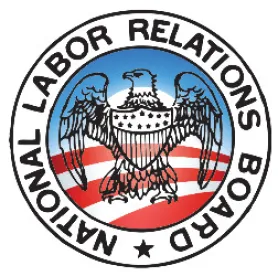Federal labor agencies have kicked their rulemaking efforts into high gear. One month after the U.S. Department of Labor published a final rule defining (and limiting) when one entity can be deemed the joint employer of another’s employees, the National Labor Relations Board (NLRB) has followed suit. On February 26, 2020, the NLRB issued a final rule, establishing—for the first time—a federal regulation with a clear standard for determining joint-employer status under the National Labor Relations Act. The rule has been in the pipeline for a long time. It was first proposed in 2018, but the NLRB received almost 29,000 comments in response. It has taken the NLRB about 18 months—and nearly 200 pages in the Federal Register—to consider those comments and adopt a final rule. This rule is scheduled to become effective on April 27, 2020.
The NLRB’s rule should have a sweeping and positive impact on the nation’s business community, as it replaces the nebulous, overbroad, and unworkable standard the NLRB adopted in its 2015 Browning-Ferris Industries (BFI) decision. Under the BFI standard, most every business could be deemed to jointly employ the employees of some other business. The BFI standard put an employer at risk simply based on the terms of its contracts with other companies, particularly when those other companies provided services on the employer’s premises. Under BFI, the mere contractual right to exclude an employee of another company constituted “reserved control” sufficient to establish joint-employer status, even if that right was never exercised. Likewise, the BFI rule would have allowed for a franchisor to be deemed the joint employer of its franchisees’ employees.
The NLRB’s final rule restores the pre-BFI standard by providing that one business entity can be deemed the joint employer of another entity’s employees only when the two businesses codetermine essential employment terms—and that codetermining employment terms requires the actual exercise of “substantial control” over those terms, rather than a practical ability or contractual but unused right of control. Moreover, the rule provides a level of clarity that the Board had not previously given the employer community, as it does the following:
-
Defines exactly what constitutes the “essential terms and conditions of employment” and limits those to eight common factors (“wages, benefits, hours of work, hiring, discharge, discipline, supervision, and direction”)
-
Defines “substantial control,” requiring that it be “direct and immediate control that has a regular or continuous consequential effect on an essential term or condition of employment”
-
Defines what “direct and immediate control” means as it applies to each of the eight “essential terms and conditions of employment”
-
As to discipline and discharge, it means making the decision, but it does not include such actions as pointing out performance issues to the employee’s actual employer, setting minimal performance standards, or refusing to allow a particular employee to access the premises or perform work under a contract.
-
As to wages, it requires setting the wage rates, but it does not include entering into cost-plus contracts.
-
As to benefits, it means specifying the benefits to be provided, but it does not include allowing another employer to participate in the putative joint employer’s employee benefit plans.
-
As to hours of work, it means determining work schedules, but it does not include establishing operating hours or when the services of the other employer are required.
-
As to direction, it means “assigning particular employees their individual work schedules, positions, and tasks,” but it does not mean setting completion schedules or detailing what work is required.
-
-
Allows for “evidence of indirect or reserved-but-unexercised control” to be considered, but only to the extent it “supplements and reinforces evidence of the . . . exercise of direct and immediate control over a particular essential term and condition of employment”
The final rule’s clarity and application to a plethora of common business relationships and practices greatly benefit the employer community, as employers now have the guidance they need to structure their operations and contracts with confidence regarding whether they will be deemed to jointly employ another company’s workers.
Key Takeaways
Employers now have a clear standard for structuring their operations and contracts. However, the final rule would still deem many businesses to jointly employ another entity’s employees if they “exercise substantial direct and immediate control” over those employees. Employers may want to review their practices and agreements with businesses with which they contract for services, and structure their practices and contracts to ensure they are not unwittingly subjecting themselves to being deemed the joint employer of another company’s employees.




 />i
/>i
